It’s hard for me to believe that I started this (yet another) project going on nine years ago. With just over two hundred countries in the world in which to explore their national, or most popular, soups and empanada-like dishes (later changed to a variety of breads), I had the lofty plan of one a week. Such a project, even allowing for the occasional missed week, or vacations, would have taken a bit over four years. Yet, here we are, nine years have gone by, and I’m only up to the 59th entry. But, I plug along. The Bread & Soup Project will, one day, be completed. I hope.
I do like my Fun with Flags moment, along with a little history of each country. The Ethiopian flag has changed multiple times since the 17th century when it was first flown. Interestingly, the three color background, while its form and order has changed several times, has always been a part of it. The Ethiopian Orthodox Church called for red for faith and power, yellow for the church & peace, and green for natural wealth. Later, these colors, plus blue, were adopted as the Pan-African colors and came to mean red for blood, yellow for hope, green for labor, development, and fertility, and blue for peace. In 2009, the use of the yellow star emblem was enshrined into law (though it had existed as one emblem option prior), to signify Ethiopia’s bright future, with the rays emanating signifying the country’s commitment to equality for all races and creeds.
On to our brief facts section - Ethiopia is in northeastern Africa. Capital, Addis Ababa. Its land mass is 429,000 square miles (1,112,000 square kilometers), making it equal to roughly Texas and California combined. Funny that in world map projections it looks smaller than either. Its population is approximately 110 million people (4 million of whom live in the capitol), or those of California, Texas, Florida, and New York, our most populous states, all together. Around one-third each of its citizens are identified with either the Oromo or Amhara peoples. More than two-thirds are Christian, with the largest block belonging to the Ethiopian Orthodox Church, a two millennial old pre-colonial Christian sect.
On to the food! Noted for its thick, rich, meaty stews and vegetable side dishes, most meals are eaten using injera bread, made from teff flour, rather than utensils. Since I already explored that bread in my entry on Eritrea, I went a different route, with Ye Misir Sambusas, a small, triangular sort of empanada filled with intensely spiced lentils. For the soup, the popular Ye Ocholoni Ina Doro Shorba, a rich, spicy, peanut and chicken soup.
The sambusas are the most complicated to make, involving a couple of pre-combinations that while an Ethiopian household might consider common pantry staples, most of us probably don’t. The first thing to make is the niter kibbeh, a spiced butter, that’s apparently pretty common as a flavoring agent. We have butter, dried shallot and garlic (or fresh of each), ginger, cinnamon stick, cardamom (I didn’t have any pods, so some ground cardamom off to the right), cumin, fenugreek, coriander seeds, peppercorns, and bay leaf.
Basically, you’re making a brown butter infused with all those things. Over very low heat, for about 15-20 minutes, until the butter is nicely browned and well-flavored. Then strain it and set is aside. It can be refrigerated for later use.
Now we’re ready to make our lentil filling. I’m making a dozen here. A small chopped onion, a half teaspoon each of grated garlic and ginger, a tablespoon of the strained butter from above, about 75 grams (3/8 cup) of lentils, a teaspoon of berbere spice mix (the other thing that needs to be prepared, I use this recipe to make my own since it’s not available here, and 175ml (3/4 cup) of vegetable stock.
Fry the onions and spice mix, and a large pinch of salt in the butter until soft, then add the ginger and garlic and cook off for about a minute.
Add the lentils and stock, reduce heat to as low as it goes, and simmer away for about 30-35 minutes.
You want to end up with a thick filling for the sambusas. If the liquid is cooking off too rapidly and the lentils aren’t soft, just add a splash more at a time of either stock or water, until the lentils are cooked through. Set aside to cool - I spread them out on a plate and stuck them in the refrigerator. But these can be prepared in advance.
Next up, the dough. 120 gms (1/2 cup) of all purpose flour, a 1/2 teaspoon of salt, a tablespoon of the spiced butter from above, and just enough water to bring it together in a smooth, non sticky dough - around 45 ml (1-1/2 oz), though that will depend on your flour. Let the dough rest for 20 minutes.
Divide into six equal pieces and roll out into six rounds, then cut each round in half.
Put about a tablespoon of the lentil mixture in the middle of each half round.
Fold one corner up and over, sealing it along the outer edge.
And then, fold the other corner over that, sealing it all around, to create rounded triangles.
And, fry them in neutral oil until nicely browned on both sides.
On to our soup, the Ye Ocholoni Ina Doro Shorba. We have carrots, a sweet potato, onions, some smooth peanut butter, some basmati rice, chicken breasts, and more berbere spice mix. Not pictured, enough chicken stock, heated up in a pot, to cover everything.
Cook the diced vegetables in a little oil with the spice mix, until lightly browned and softened. Add the stock and cook for about twenty minutes.
While traditionally probably this is just mashed with some sort of potato masher type implement, these days, if you have one, use a stick blender and just pulse it a few times. You still want chunks of vegetable, you just want to sort of thicken the soup up a bit by pureeing some of them. If you just have a regular blender, you could ladle maybe a quarter of the soup into that, puree it, and add it back in.
Add the rice, the diced chicken, and the peanut butter, bring back to a simmer and cook for about 20 minutes until the rice is cooked through. Adjust seasoning if needed. I added maybe another 1/2 teaspoon of salt, though that depends on how salty your chicken stock is.
And, serve it all up. Some toasted peanuts can be added as a garnish.
We loved the soup. It’s rich, delicious, and has an amazing balance of sweetness from the carrots and sweet potato against the spice mixture. Henry liked the sambusas more than I did. I thought the flavor a bit too intense - maybe just cutting back the amount of spice in it. I felt like they needed something to balance - a creamy sauce, or maybe a nugget of cheese inside. But they were good, and we didn’t leave any on the table.
Finally, as I said, the Es are done, and we move on the to the Fs. Next round - Fiji!


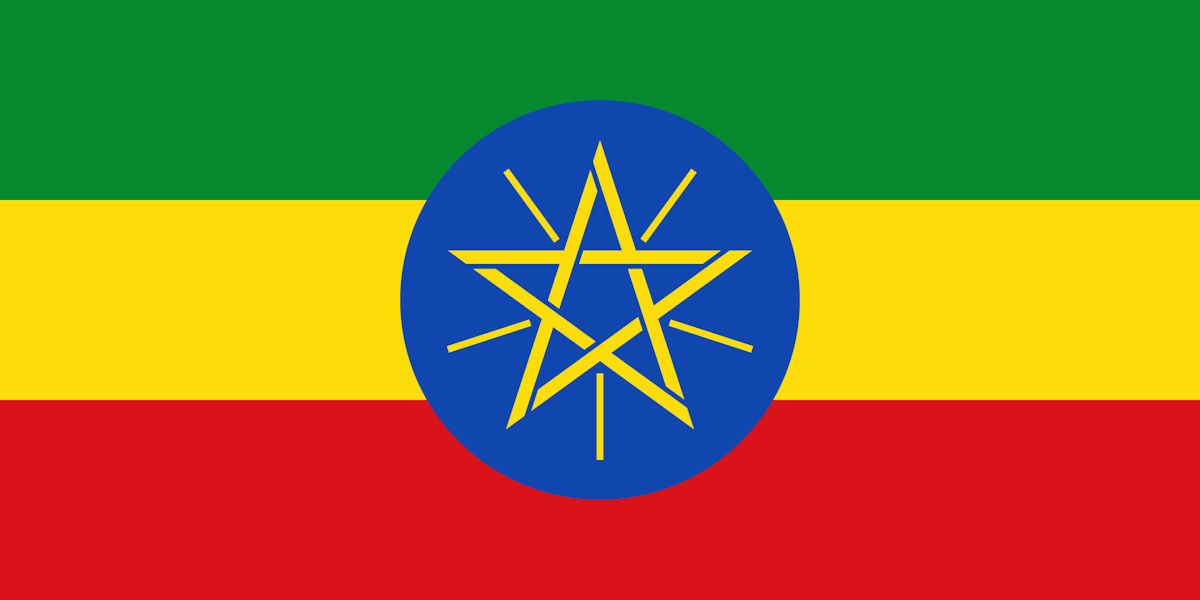



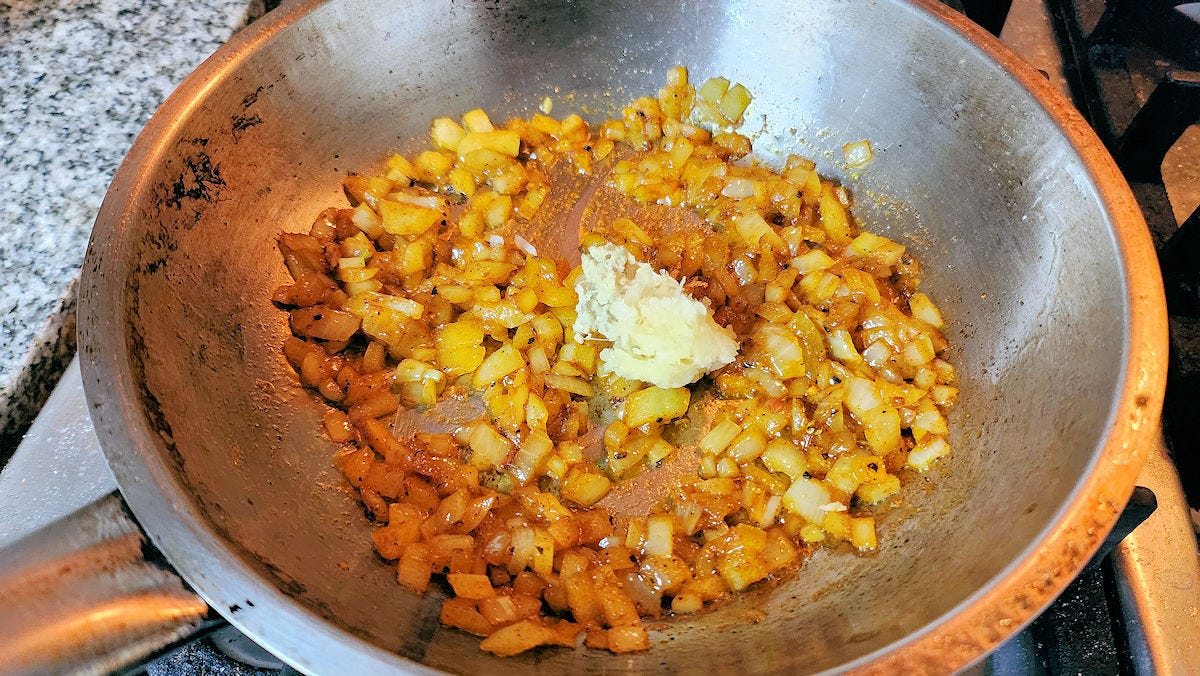
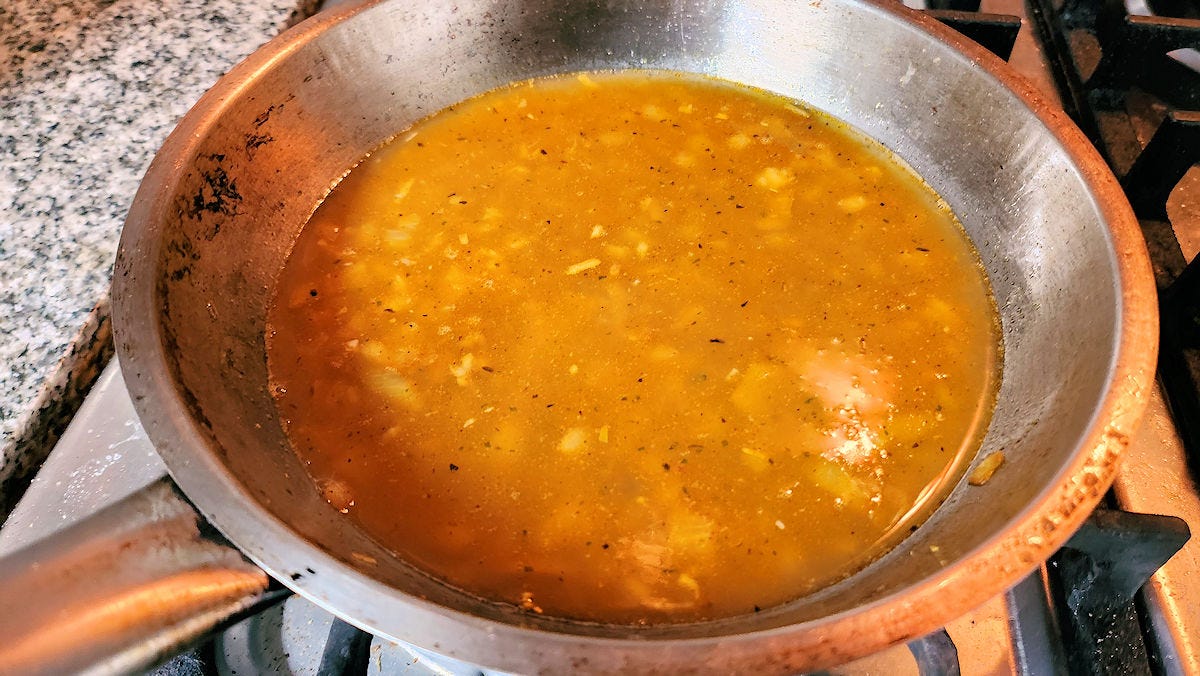
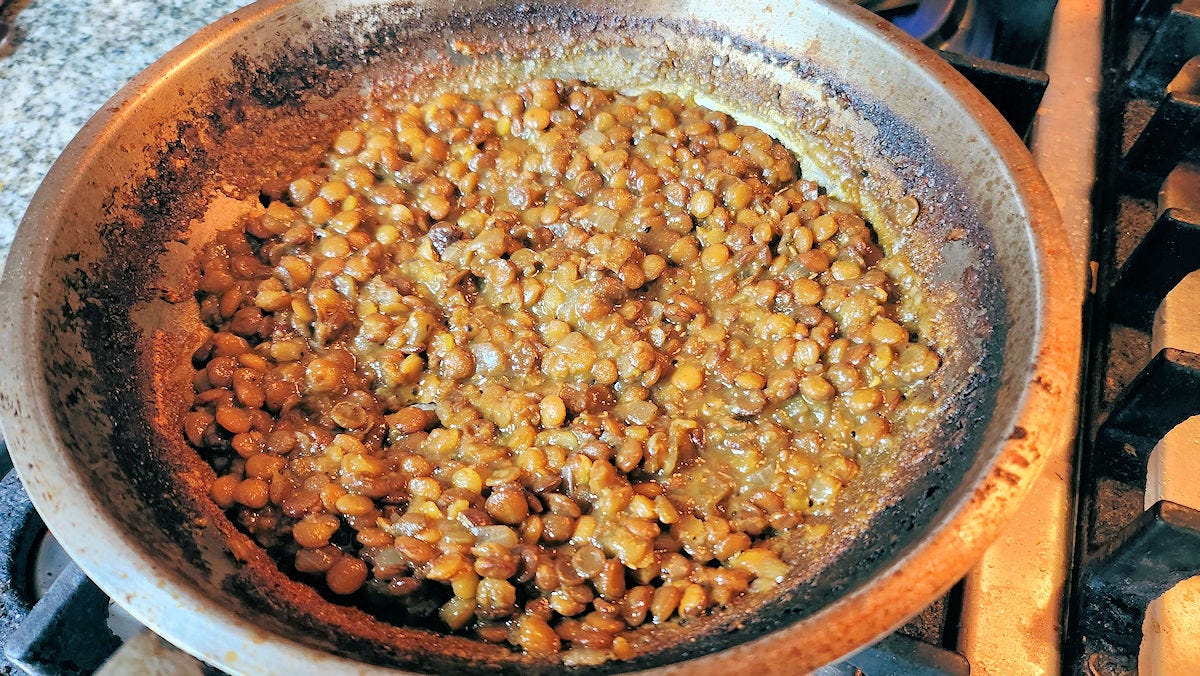




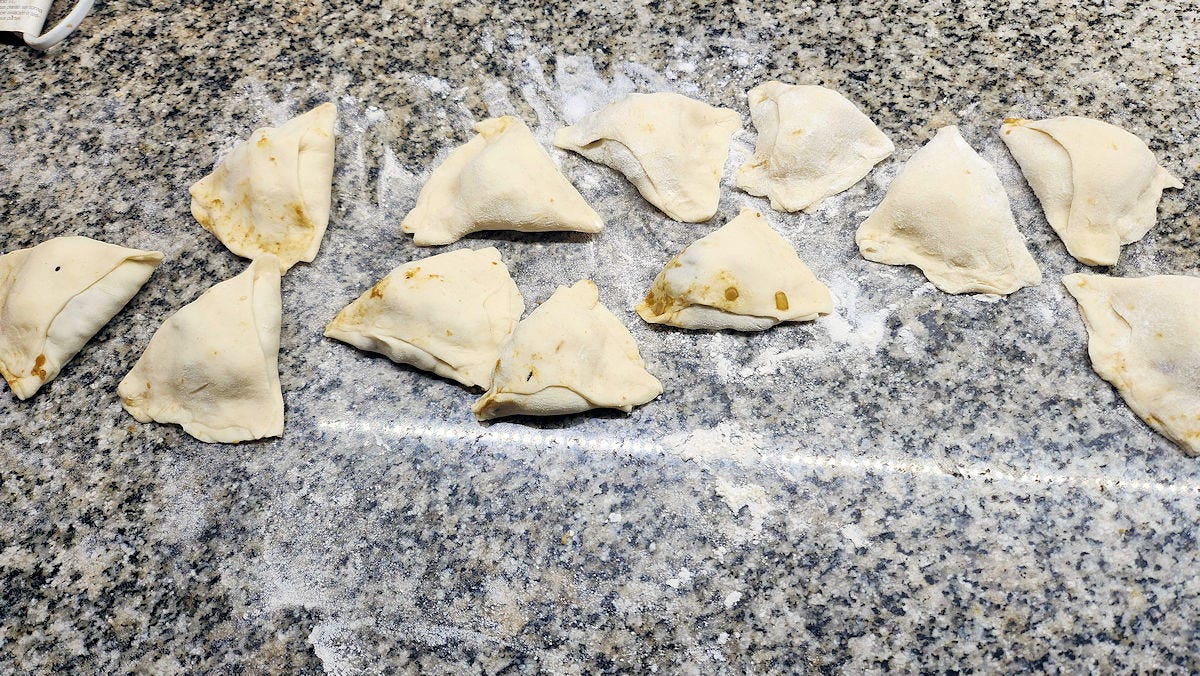

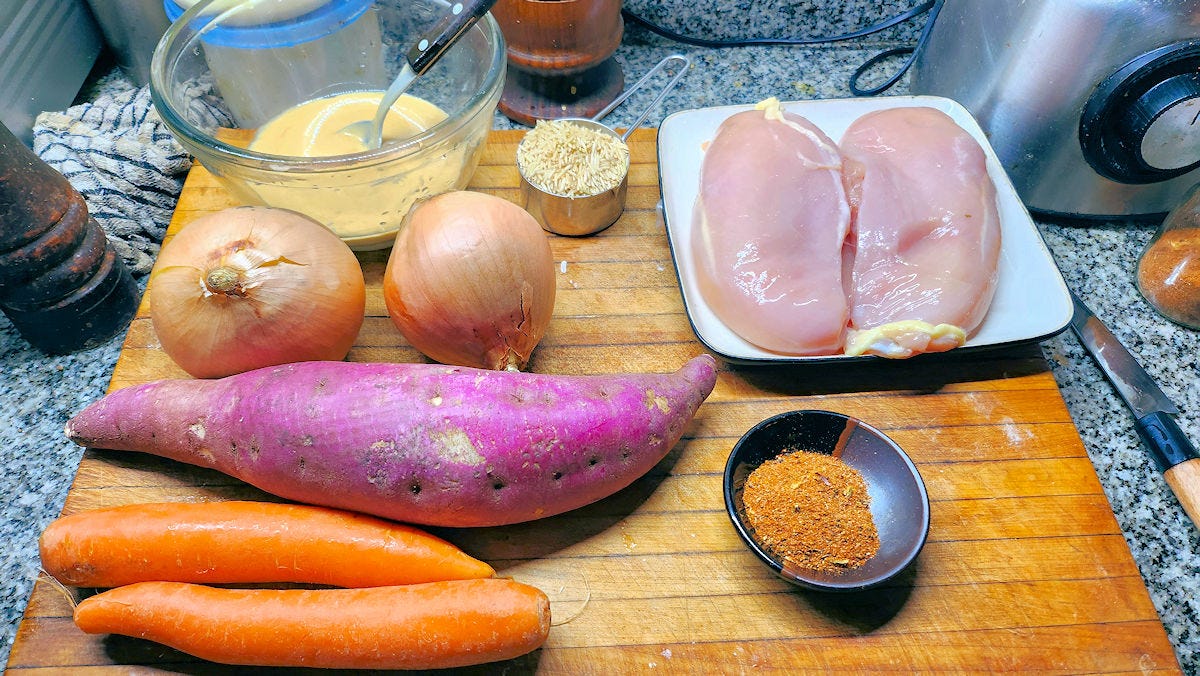




That meal looked delicious.